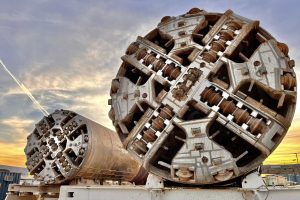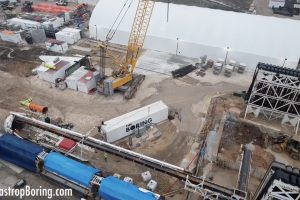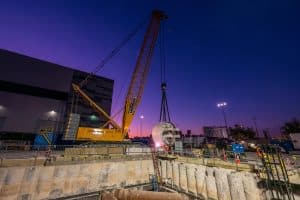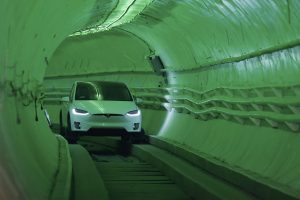In more ways than one, The Boring Company is truly becoming an Elon Musk-founded firm. The tunneling business is also attracting quite a lot of criticism from ardent skeptics, apart from growing quite quickly for a start-up of its size, many of whom seem to be under the impression that the ventures of the Boring Company are useless, or at best poorly conceived.
CNN Business published a story earlier this month on the Las Vegas Convention Center loop system of The Boring Company, which is about to open early next year. A $48.6 million contract was allocated for the project, but it is estimated to cost a total of $52.5 million, and it includes two mile-long tunnels where Teslas will ferry passengers from one side of the Las Vegas Convention Center complex to the other.
Needless to say many people interviewed by the news agency were highly suspicious of The Boring Company’s vision. The ideas of the tunneling start-up were strongly criticized by Christof Spieler, a lecturer at Rice University who researches transportation and urban planning, arguing that the Loop system appears poorly thought-out. “These feel like the kind of renderings an architecture student would do for their one-semester project. I don’t see any evidence that this has really been thought through in terms of how it would function,” he said.

Further explaining, Spieler noted that the renderings of the LVCC Loop make the system look more like taxi-loading areas. When such a scheme in place, the lecturer said that when the system is in service, difficulties will undoubtedly occur, such as cars jockeying past each other to pull in and out, which would in turn adversely affect the operations of the system. He also noticed that the renderings do not appear to indicate any obstacles that would prevent the entry of unauthorized cars into the tunnels.
Ultimately, Spieler noted that a standard people mover is also a superior option, since passengers do not have to duck to board cars, and instead of accessing the trunk of a car, they could still carry their luggage. “It seems like car-thinking applied to a transit problem that we already know how to solve,” he said.
Gerry Tierney, who co-directs the mobility lab at Perkins&Will, which has designed transit systems in North America and the Middle East, was bolder in his criticism of The Boring Company. He took issue with the use of Teslas by the system, calling the term “comically inefficient” and refusing to name a transit system the LVCC Loop. “This is not a transit system. It’s a system for driving electric vehicles underground,” he said, adding that Musk’s idea is pretty much what would happen if intricate transit systems like the London Underground replaced its subway trains with cars.
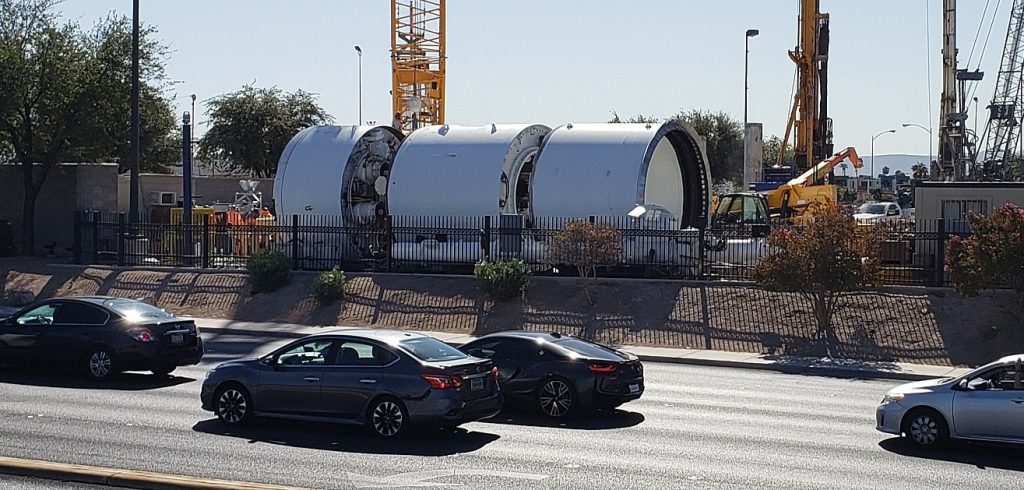
Although the technology of The Boring Company is yet to be proven, it also seems very careless to fully underestimate the promise of the LVCC Loop even before it can be tested. After all the Boring Company and its technology are not being developed by a random group of unqualified people, and Elon Musk himself has shown over the years that even conventionally crazy concepts, such as landing the first stage of an orbital rocket on a drone in the middle of the ocean or scaling the development of a mass-market electric car, could be feasible if adequate effort is put in.
Overall, the skeptics of the tunneling start-up seem to make the very same mistakes as those who were often dismissive of Musk’s previous SpaceX and Tesla projects. As he remarked that the idea of using Teslas in tunnels is darker than it sounds, Musk was not kidding. This is partially because the inventions of The Boring Company are not really the people-movers, but the tunnels themselves. Although the use of all-electric vehicles in the Loop structures is a key component of the vision of The Boring Company, the true disruption of the startup lies in the ways in which it could create tunnels much faster and much cheaper than any other business in the industry.
The Boring Company intends to accomplish these goals with rather simple solutions. The tunneling start-up built its tunnels to fit smaller vehicles, so smaller tunnels are easier to construct. All-electric cars are used in such a way that the tunnels do not require a comprehensive system designed to deal with the emissions of the vehicles which use them. The tunnel boring machines (TBMs) of The Boring Company are also continuously optimized, making them increasingly easier and cleaner to use. All of these may sound like little change to traditional tunneling methods, but each represents a step towards a possible future in which tunnels may be constructed quickly at scale, and perhaps even autonomously.
The ideas of people like Elon Musk and his teams at The Boring Company, SpaceX, and Tesla are easy to mock or ignore. But because Musk’s companies make it fairly easy to threaten them because of their ambitions and design, the experience of SpaceX and Tesla shows that betting against Musk and his team of visionaries is a mistake, almost all of whom seem to have the tendency to think outside the box by design. As for the LVCC Loop of the Boring Company, there seems to be a strong possibility that it will meet expectations, with recent simulations showing that the device could move around 13,000 individuals an hour, and that’s with the system operating nowhere near their limit.
Want to buy a Tesla Model 3, Model Y, Model S, or Model X? Feel free to use my referral code to get some free Supercharging miles with your purchase: http://ts.la/guanyu3423
You can also get a $100 discount on Tesla Solar with that code. Let’s help accelerate the advent of a sustainable future.


